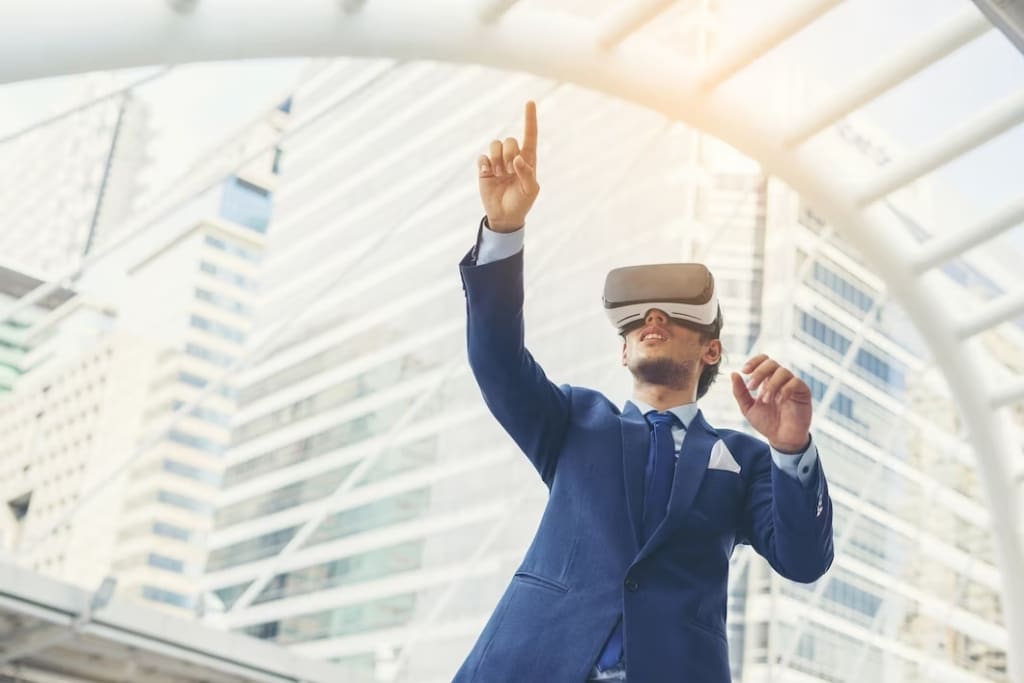Revolutionising Architecture with Virtual Reality: A Look at the Advantages
Understanding the Impact of Virtual Reality on the Architecture Industry.

Virtual reality technology has rapidly developed over the past few years and has revolutionised various industries, including architecture. The integration of virtual reality in architecture has allowed architects and designers to visualise their designs in an immersive and interactive environment, providing numerous advantages to the field.
Architecture has attained newer heights with amazing development in virtual reality and automated processes. In this article, you will explore the benefits of virtual reality and how it transforms the architectural industry.
The major benefit of virtual reality in architecture is the ability to make changes to the design quickly and easily. With traditional design methods, changes would require significant time and effort. With VR, changes can be made quickly, allowing architects to experiment with different design elements and adjust accordingly.
Below are a few points that provide deeper insight into virtual reality and its role.
Enhanced Visualisation
The primary advantage of virtual reality in architecture is enhanced visualisation. Virtual reality allows architects to create a 3D model of their designs and visualise them in a virtual environment.
This immersive experience helps architects and designers better understand the spatial relationship between different elements in their designs.
By using virtual reality in construction, architects can easily modify their designs in real-time and quickly understand how the changes affect the overall design. This saves time and improves the accuracy of the design process.
Improved Communication
Virtual reality also improves communication between architects, designers, and clients. With the help of virtual reality, architects can provide their clients with an immersive walkthrough of their designs, allowing them to experience the space as if it were real.
This helps clients to understand the design better and provide feedback for their custom home plans.
The use of virtual reality also facilitates collaboration between different teams, such as architects, interior designers, and contractors. Virtual reality allows them to work on the same platform, making it easier to exchange ideas and make changes to the design.
Cost-Effective
Another advantage of VR in architecture is that it is cost-effective. Traditional methods of designing and visualising buildings can be expensive and time-consuming.
Virtual reality technology allows architects to design and visualise their projects more efficiently, reducing the time and cost involved in the process. Virtual reality also eliminates the need for physical models, which can be costly and time-consuming.
By using virtual reality, architects can save time and resources, allowing them to focus on other important aspects of the project.
Improved Design Accuracy
Virtual reality technology also helps improve the accuracy of designs. With the help of virtual reality in building design, professional architects can identify potential design flaws and make corrections before the construction phase.
This reduces the risk of costly mistakes during the construction process, saving both time and money.
By using virtual reality, architects can also test different design options and evaluate their environmental impacts, such as lighting and acoustics. This helps architects make informed decisions and create more sustainable and efficient designs.
Enhanced Client Satisfaction
Virtual reality also enhances client satisfaction. With the help of virtual reality for home design, clients can experience their designs in a more realistic and immersive way. This helps them to visualise the final product and make informed decisions.
Clients can also provide feedback on the design in real time, making it easier for architects to make changes and meet their requirements. By using virtual reality, architects can provide their clients with a better understanding of the design, leading to increased client satisfaction.
It is particularly useful when working on complex projects that require a high level of detail. Virtual reality can be used to visualise the impact of different lighting conditions and materials.
This allows architects to experiment with different lighting and material options and choose the ones that will provide the best results for their design.
Conclusion
Virtual reality largely supports custom and commercial designs for clients. With VR, architects can create more environmentally friendly designs, using sustainable and energy-efficient materials.
Multiple commercial design buildings are made significantly to work together to achieve the same objective. Every profession requires a different environment, office space, and office design.
Virtual reality in commercial designs proved to be more beneficial and profitable as it can improve productivity, and collaboration between architects, designers, and other stakeholders.
With VR, everyone can view and interact with the same design, regardless of location. This can lead to more efficient and effective communication, resulting in a better overall outcome for the project.
About the Creator
Juliann
I am a professional writer and blogger. I’m researching and writing about innovation, Health, technology, and the latest digital marketing trends.
Enjoyed the story? Support the Creator.
Subscribe for free to receive all their stories in your feed. You could also pledge your support or give them a one-off tip, letting them know you appreciate their work.






Comments
There are no comments for this story
Be the first to respond and start the conversation.